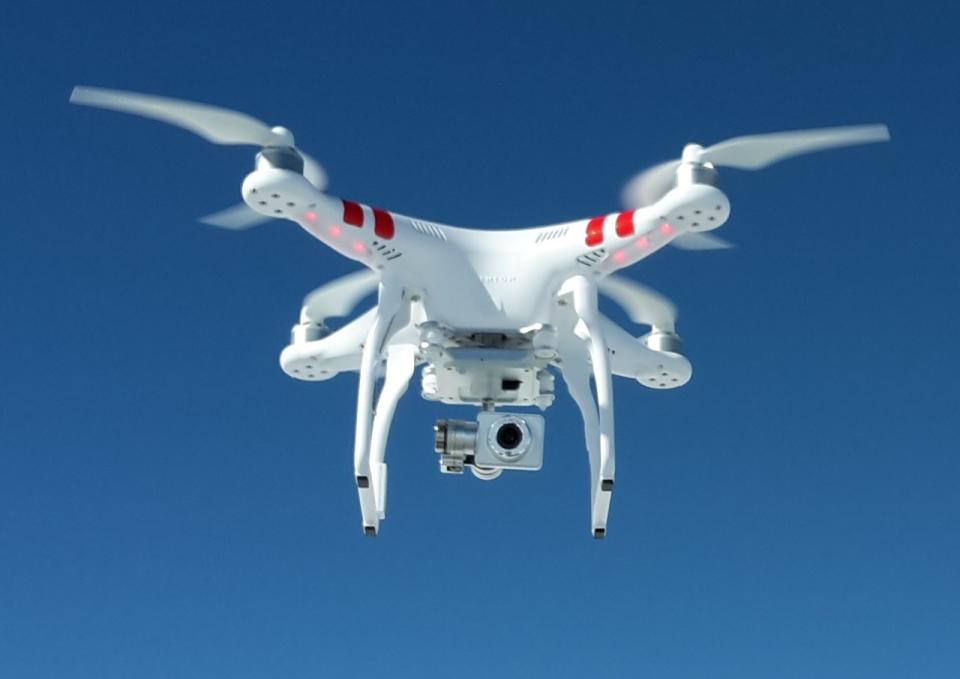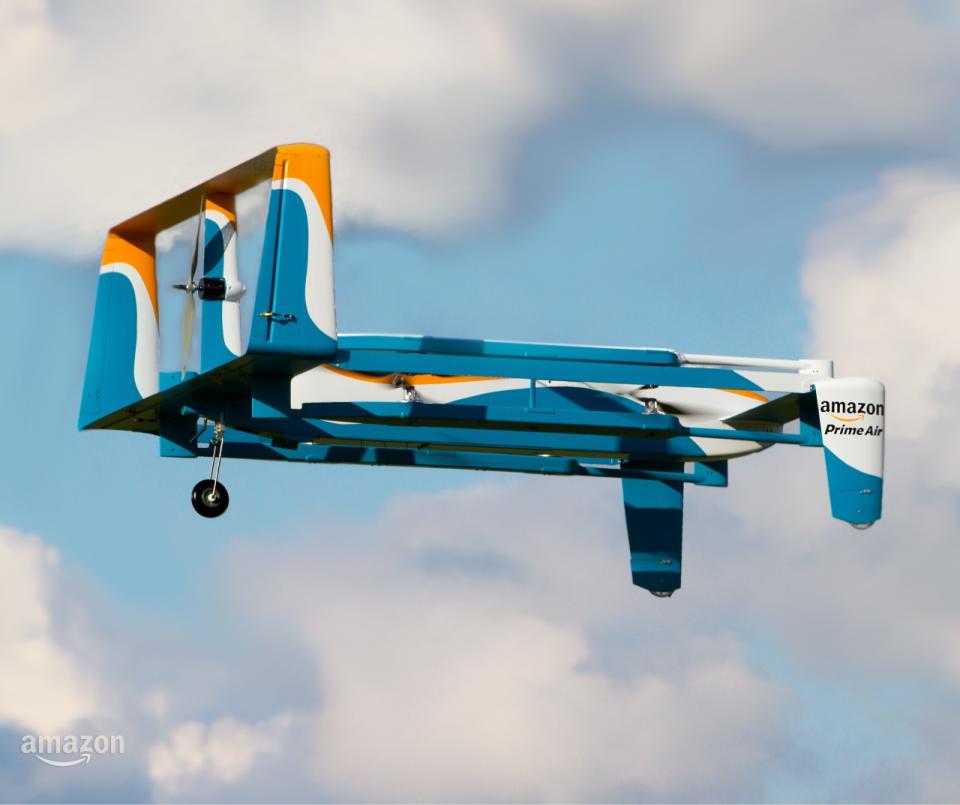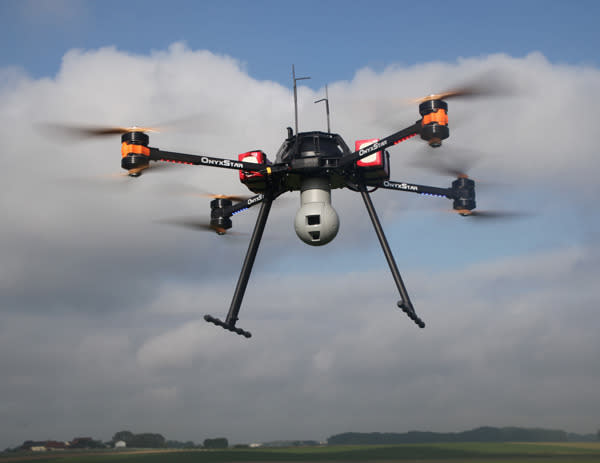New FAA rules open the skies to commercial drones—mostly

When it comes to drones, there are the well-wishers: “What an advance in farming, search and rescue, construction, engineering, forestry, firefighting, law enforcement, filmmaking and photography!” And there are the naysayers: “I don’t want eyes in the sky invading my privacy, churning up a deafening racket and crashing into crowds!”
Today, after years of trying to reconcile these two viewpoints and wading through thousands of proposals, drafts and public comments, the FAA has finally issued its rules for commercial drones. (These rules cover drones flown for payment; the FAA already has guidelines for amateur, just-for-fun drones.)
The new rules for commercial drones, which go into effect in late August, are far more relaxed than many drone fans had feared. For example, the final rules abandon the requirement that you have to have a pilot’s license—for airplanes—to fly a drone. Now you just need a drone pilot’s certificate, which is far faster and cheaper to get.
(The FAA doesn’t call them drones—it prefers the poetic term “small unmanned aircraft system,” or sUAS—but they’re not fooling anybody. We’re talking about drones.)

With today’s ruling, the rules for commercial and amateur drone flights are now fairly similar. Here’s the official FAA document (624 pages), here’s the FAA’s summary document…and here’s plain-English version:
The New FAA Rules for Flying a Commercial Drone
The pilot. You must be over 16 and speak English. You have to pass a knowledge test at an FAA-approved test center, which are listed here. (If you already have a pilot’s license—a “part 61 certificate”—you can take this test online.) You also have to get a drone operator certificate (a “remote pilot certificate” that never expires) or be supervised by someone who has one. You have to take a flight-knowledge test every two years.
The drone. You have to register the drone with the FAA, which costs $5. The drone must have “aircraft markings” (an ID number that can be traced back to you, the owner) and weigh less than 55 pounds. There must be at least one pilot for every drone.
The site. You can’t fly the drone while you’re under a roof (of a building or a parked car, for example). You also can’t be in a moving vehicle if you’re in a populated area. You have to keep the drone within your sight at all times, or at least within the sight of an observer who’s in communication with you.
The flight. Before you fly, you have to inspect the drone to make sure it’s safe. You can’t fly at night unless the drone’s lights are visible for three miles. Once you take off, you have to keep the drone below 400 feet, unless you’re within 400 feet of “a structure.” (That loophole lets drones inspect towers and buildings.) You can’t fly the drone over people (except your own team), you have to avoid other flying craft, and you can’t exceed 100 miles an hour.
(For amateur drones, the FAA doesn’t issue rules—they’re called only “safety guidelines”—but they’re similar. If your drone weighs between 0.55 pounds and 55 pounds, you have to register the drone with the FAA. You have to keep the drone below 400 feet, you can’t fly over people or cars, you have to keep the drone at least 25 feet away from people, you have to keep it within your sight, you have to avoid other flying craft, you can’t capture images where there’s “a reasonable expectation of privacy,” you can’t fly over infrastructure like power stations and prisons, and you can’t fly within five miles of an airport without permission.)
The Impact of the New Rules
The new commercial guidelines are a big, big deal, and hundreds of thousands of companies are breathing a sigh of relief. Compared with the previous, temporary rules (called Section 333), the new ones (called Part 107) are much less restrictive.
No longer do you need a pilot’s license to fly a drone. You don’t need a medical certificate anymore. The requirement to stay at least 500 feet away from any building is gone.

You could apply for an exemption for those Section 333 rules, and tens of thousands of companies did—but there was a huge backlog. By this month, the FAA had approved only 5,000 of them. Clearly, a new set of broader rules was necessary, and today we have them.
In general, the final FAA rules are a huge win for drone fans and the drone industry. “According to industry estimates, the rule could generate more than $82 billion for the US economy and create more than 100,000 new jobs over the next 10 years,” says the FAA’s press release.
“Right now, under the FAA 333 scheme, if you’re a small-town fire department, and you want to use a drone to search for a missing kid, you have to go file a Section 333 Exemption and get somebody who’s a licensed pilot,” says Adam Lisberg, a spokesman for DJI. (DJI is the world’s biggest drone maker). “That’s a silly and outmoded regulation. A lot of people feared that it would stay that way.”
The new FAA rules, he says, are fair. “Lots of people will be going back and forth on ‘why wasn’t this changed,’ and the discussions will be ongoing. But this is a great step forward, and it shows that the FAA really is listening to the voices of lots of stakeholders.”

Not everyone will be delighted, of course. The line-of-sight requirement stomps squarely on the plans of Amazon, Google, and Walmart to launch their delivery-by-drone programs. The FAA says it needs more time to study these automated systems. For the moment, then, Amazon Prime Air is still grounded.
The line-of-sight requirement also prevents oil companies from sending drones out to inspect remote oil pipelines. The daytime-only rule means that firefighters and filmmakers can’t use drones after sunset. The “no flying over people” rule means no overhead shots of sports games or concerts.
All of these companies are, however, welcome to ask the FAA for exemptions. (“Most of the restrictions discussed above are waivable,” says the FAA document.) And the companies will most certainly begin asking for those waivers by the end of the day, if not the end of this sentence.
No such recourse is available to the other people who dread the new era of commercial drones: helicopter pilots, scaffolding unions, and the makers of very tall ladders.


